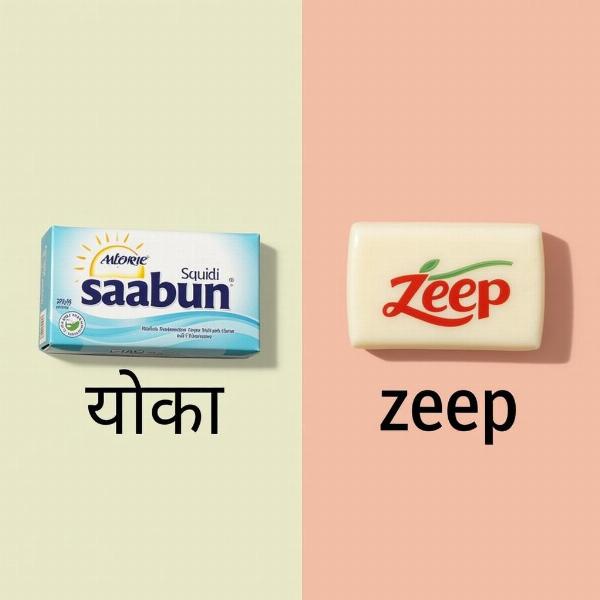Understanding the meaning of “zeep” in Hindi is crucial for anyone navigating the Indian market or interacting with Hindi speakers. While “zeep” isn’t a native Hindi word, its widespread use necessitates a clear understanding of its meaning and context. This guide explores the origins, usage, and cultural significance of “zeep” in the Indian context.
Decoding “Zeeep”: Soap in Hindi
“Zeeep” is a transliteration of the English word “soap.” It’s commonly used in informal Hindi conversations and often appears in advertising and product packaging. While Hindi has its own word for soap, “साबुन” (saabun), “zeep” has become integrated into the everyday language, especially in urban areas. This adoption reflects the influence of English on Hindi and demonstrates the dynamic nature of language.
Why is “Zeeep” So Popular?
The popularity of “zeep” can be attributed to several factors. Firstly, the British colonial legacy left a lasting impact on the Indian lexicon, introducing many English words into common parlance. Secondly, “zeep” is shorter and easier to pronounce than “saabun” for some, contributing to its widespread adoption. Finally, marketing and advertising have played a significant role in solidifying “zeep” in the Indian consumer’s mind.
“Saabun” vs. “Zeeep”: Is There a Difference?
While both words refer to the same cleansing product, “saabun” is considered the more formal and traditional term. “Zeeep” carries a more informal and colloquial connotation. In formal writing or official contexts, “saabun” is the preferred term. However, in everyday conversations, “zeep” is perfectly acceptable and widely understood.
 Saabun vs Zeeep
Saabun vs Zeeep
“Zeeep” in Indian Culture: Beyond Just Cleaning
“Zeeep” has transcended its functional meaning and entered the realm of cultural idioms and expressions. For instance, the phrase “zeeep lagaana” (to apply soap) can also metaphorically refer to flattery or sweet-talking. This demonstrates how language adapts and evolves within a specific cultural context.
Using “Zeeep” Correctly
Using “zeep” correctly is straightforward. Simply substitute it for “soap” in any informal context. For example, “Mujhe zeep do” (Give me soap) or “Yeh zeep bahut achhi hai” (This soap is very good).
Conclusion: Understanding “Zeeep” in the Indian Context
Understanding the meaning and usage of “zeep” provides valuable insight into the dynamic relationship between Hindi and English in India. While “saabun” remains the formal term, “zeep” holds a significant place in everyday communication and cultural expressions. This awareness is essential for anyone seeking to effectively communicate and navigate the Indian linguistic landscape.
FAQ
- What is the literal meaning of “zeep” in Hindi? “Zeeep” is a transliteration of the English word “soap.”
- Is “zeep” a proper Hindi word? No, the formal Hindi word for soap is “saabun.” “Zeeep” is a borrowed term.
- Can I use “zeep” in formal settings? While understood, “saabun” is preferred in formal contexts.
- What is “zeeep lagaana”? Literally, it means “to apply soap.” It can also metaphorically refer to flattery.
- Why is “zeep” so commonly used in India? Its popularity stems from colonial influence, ease of pronunciation, and marketing.
Meaning-Hindi.in: Your Trusted Partner for Hindi Translation
Meaning-Hindi.in offers expert Hindi translation services catering to diverse needs, from business and legal documents to technical manuals and website localization. Our team of experienced linguists ensures accurate and culturally sensitive translations, bridging the communication gap between languages and cultures. Whether you need fast turnaround times or specialized industry expertise, Meaning-Hindi.in is your one-stop solution for all your Hindi translation needs. Contact us today at [email protected] or +91 11-4502-7584 to discuss your project requirements. Meaning-Hindi.in is your gateway to unlocking the power of language.